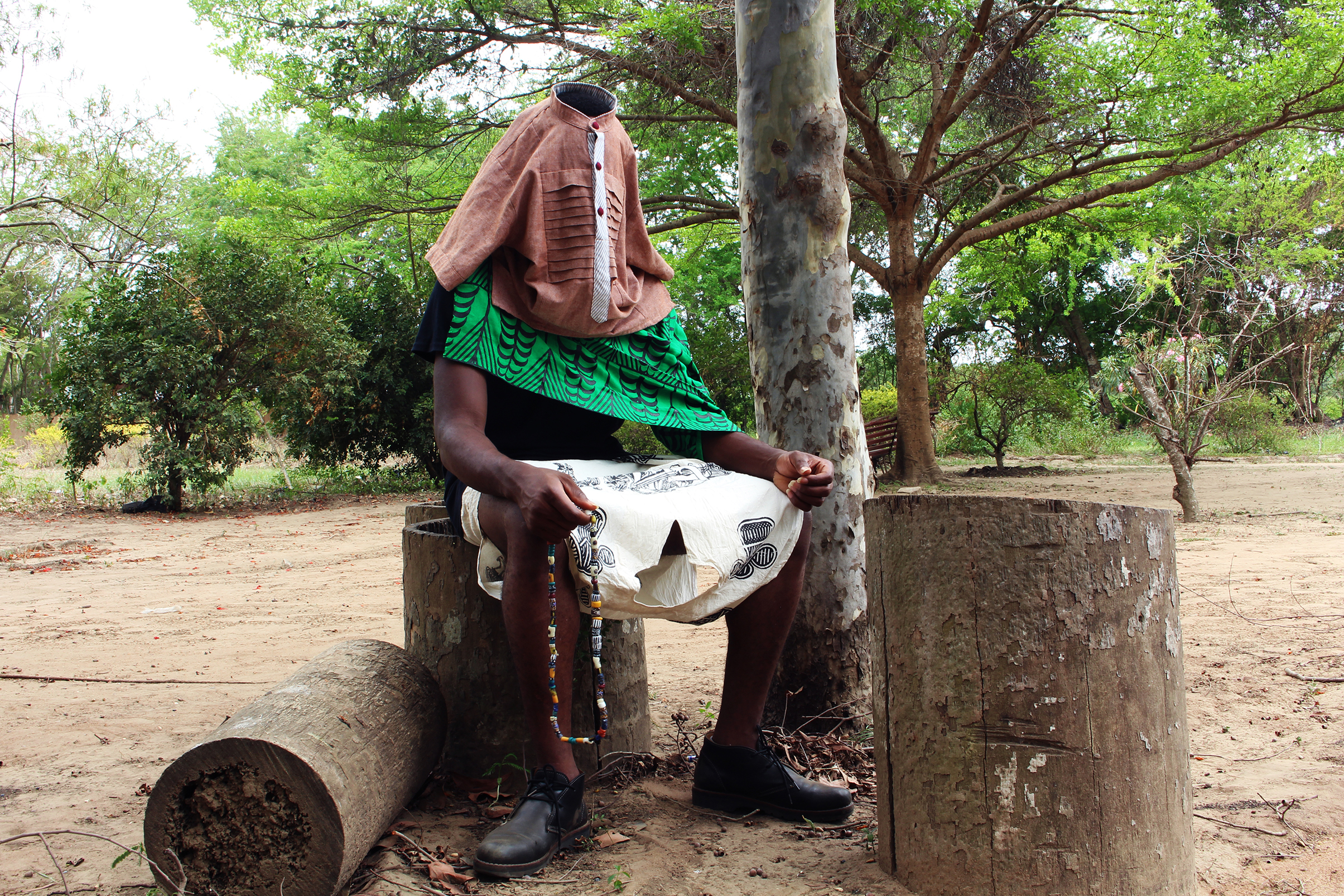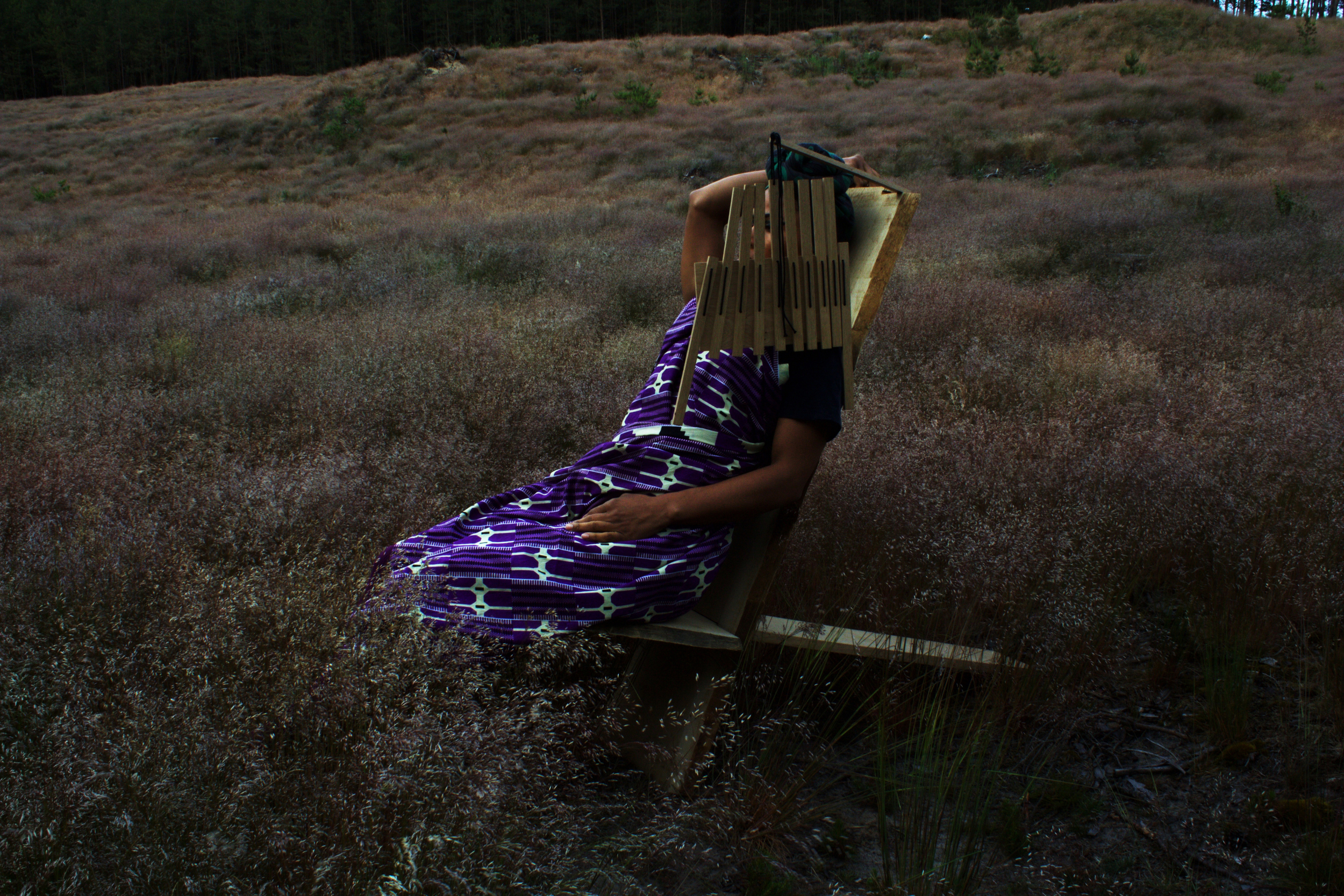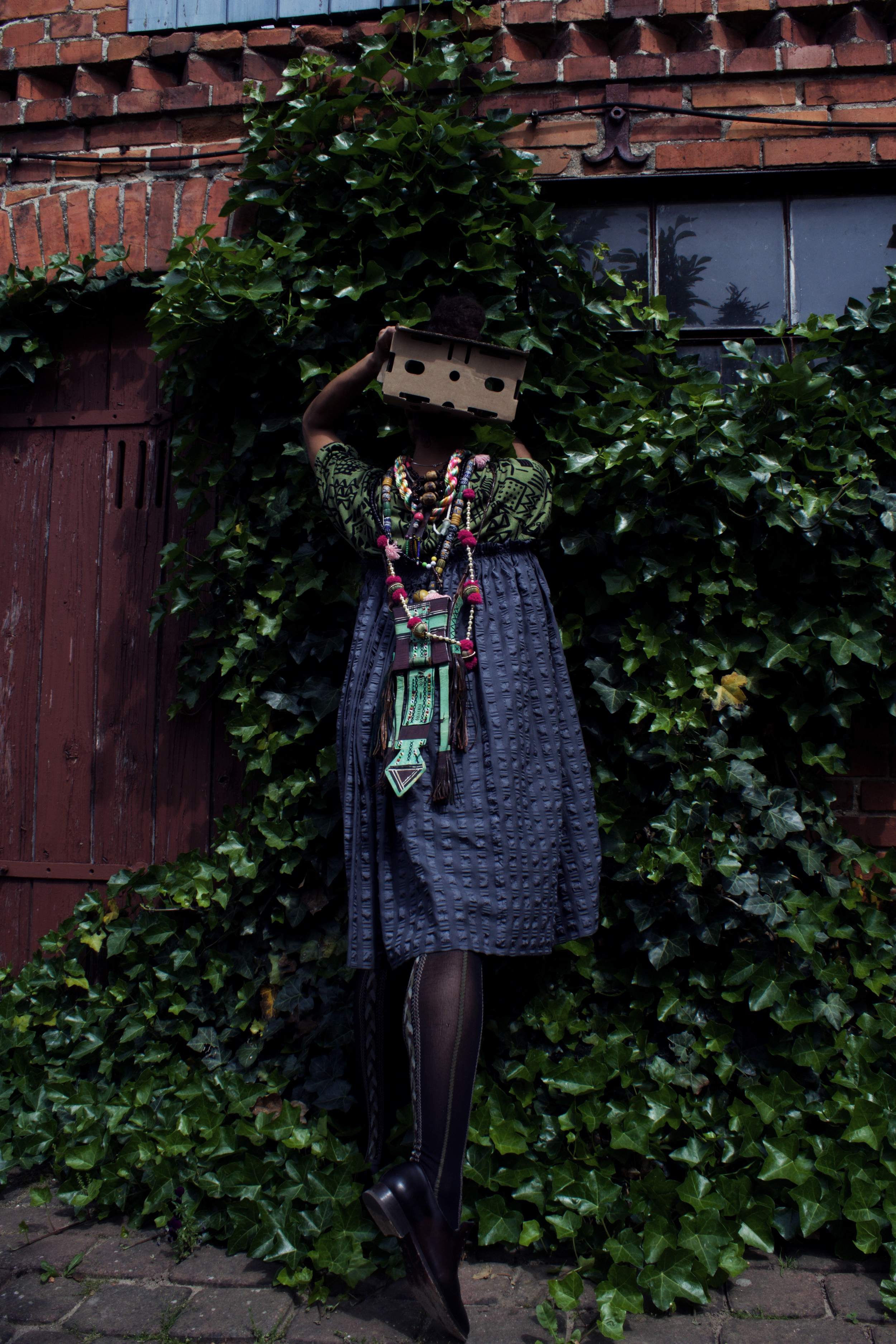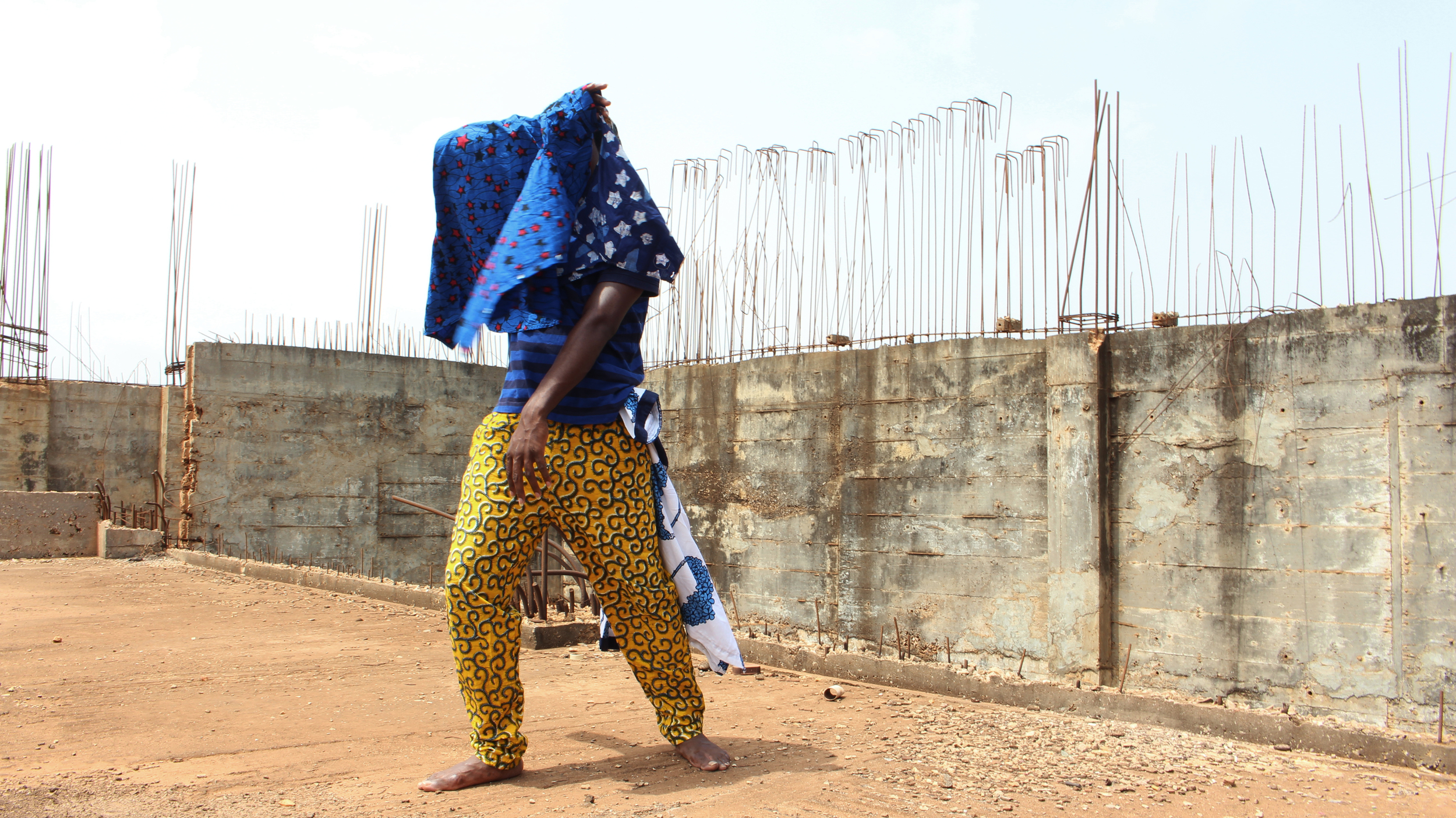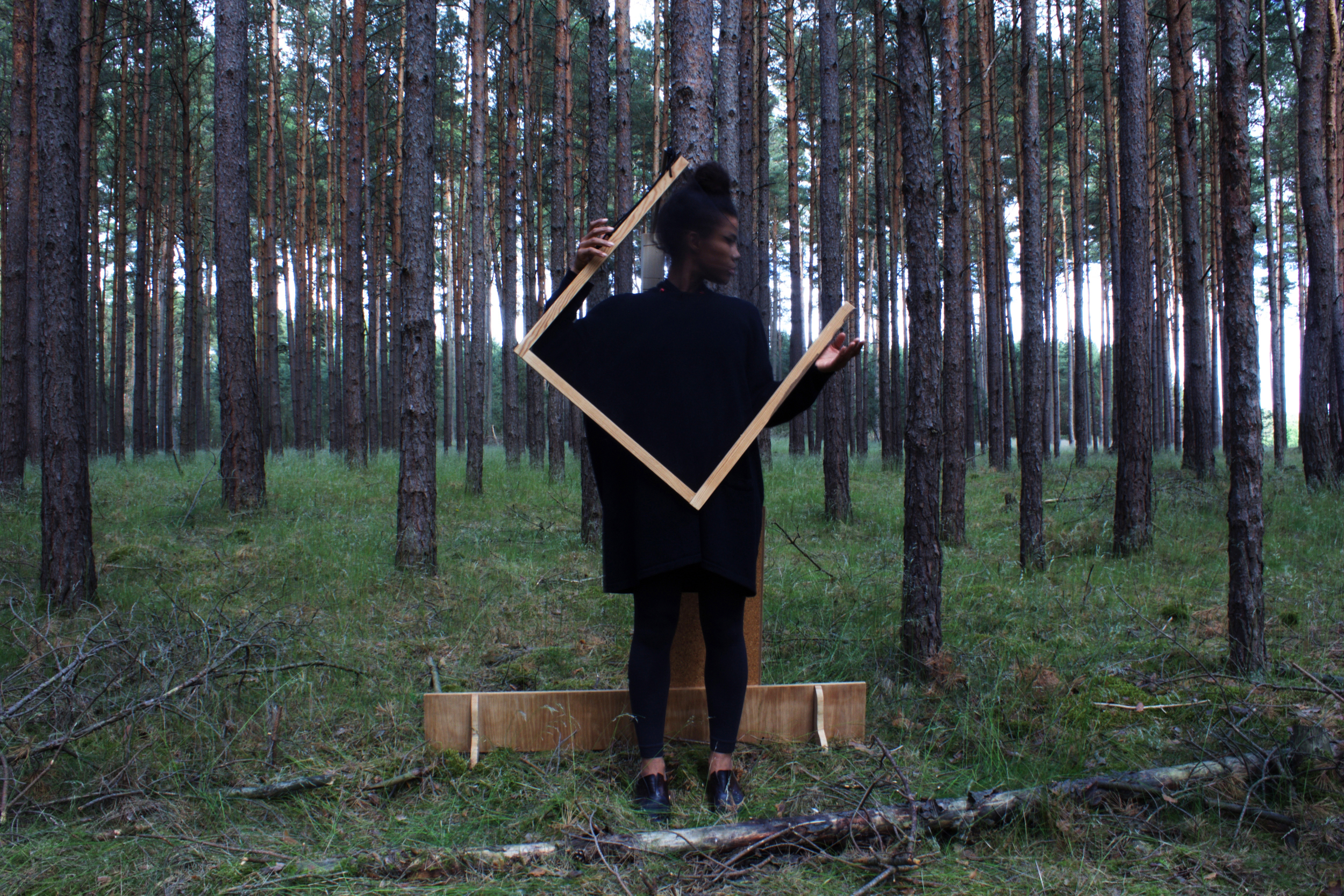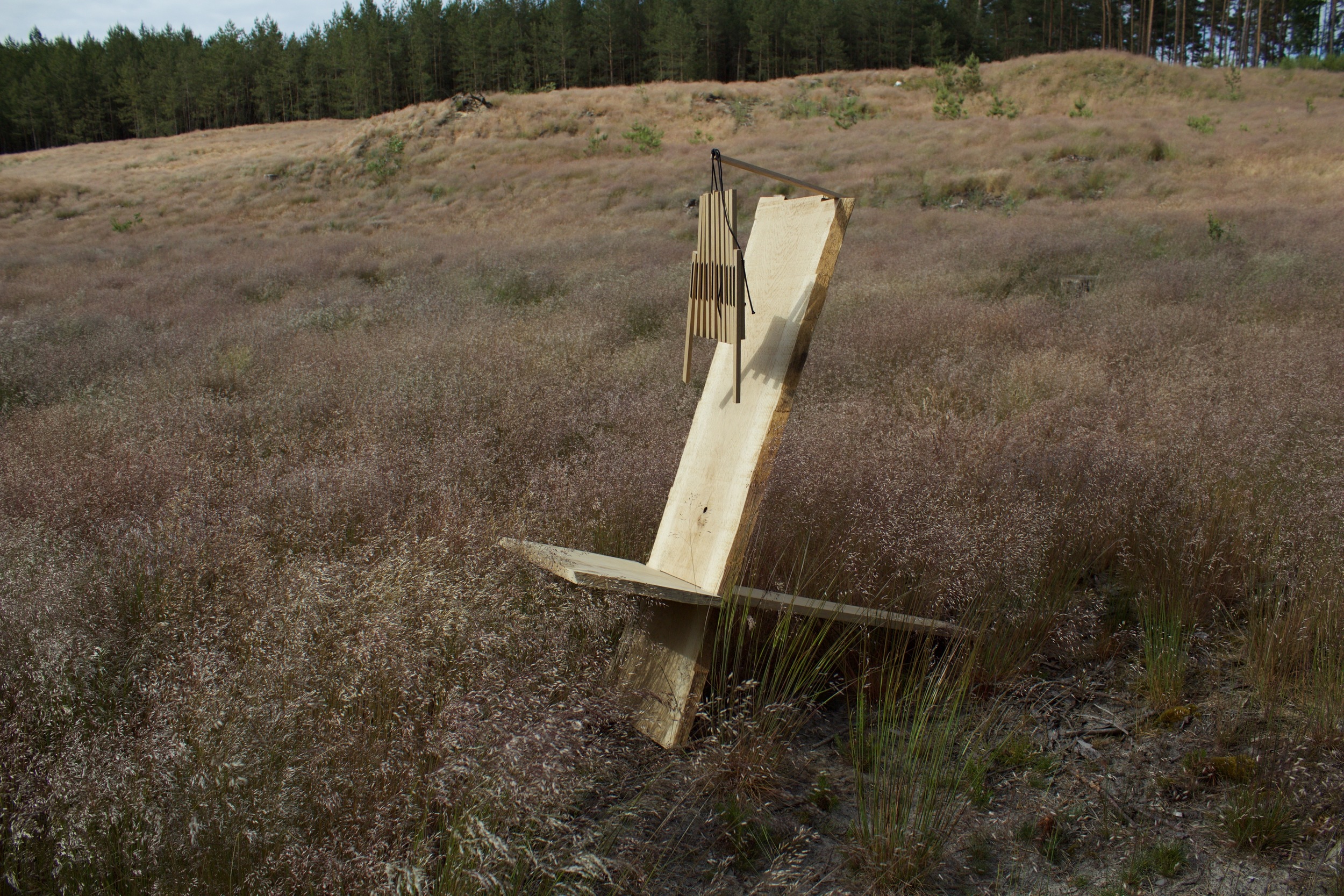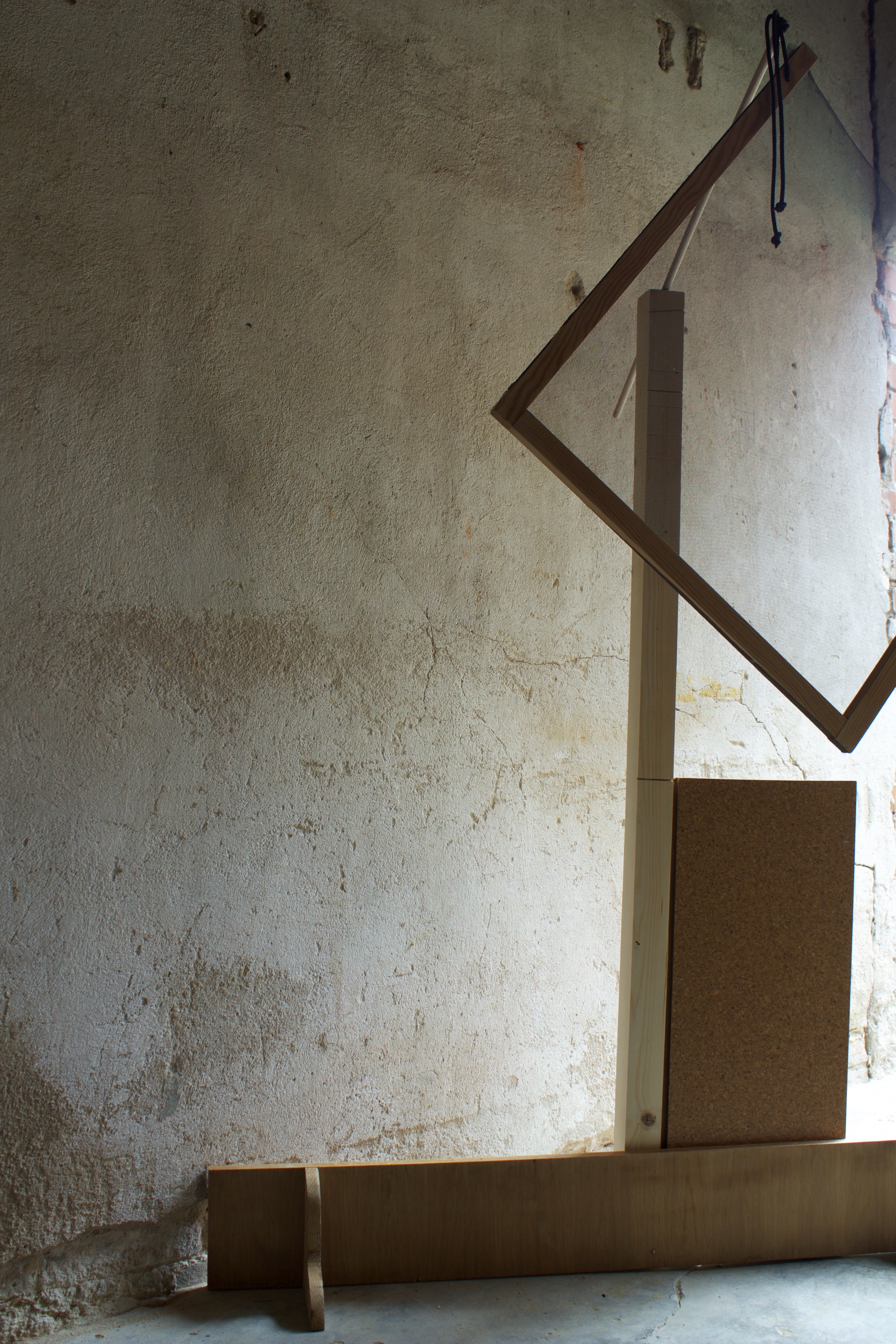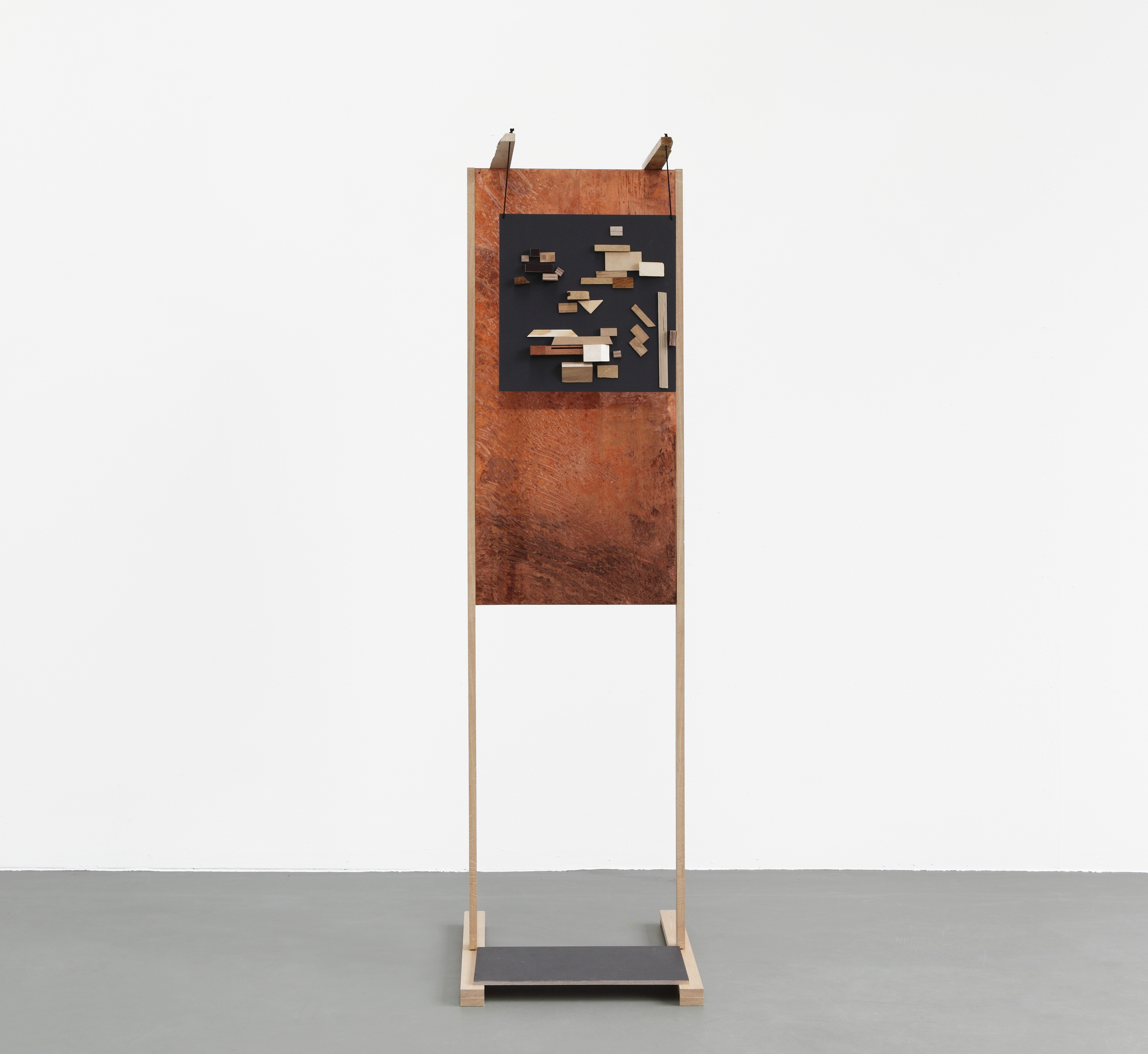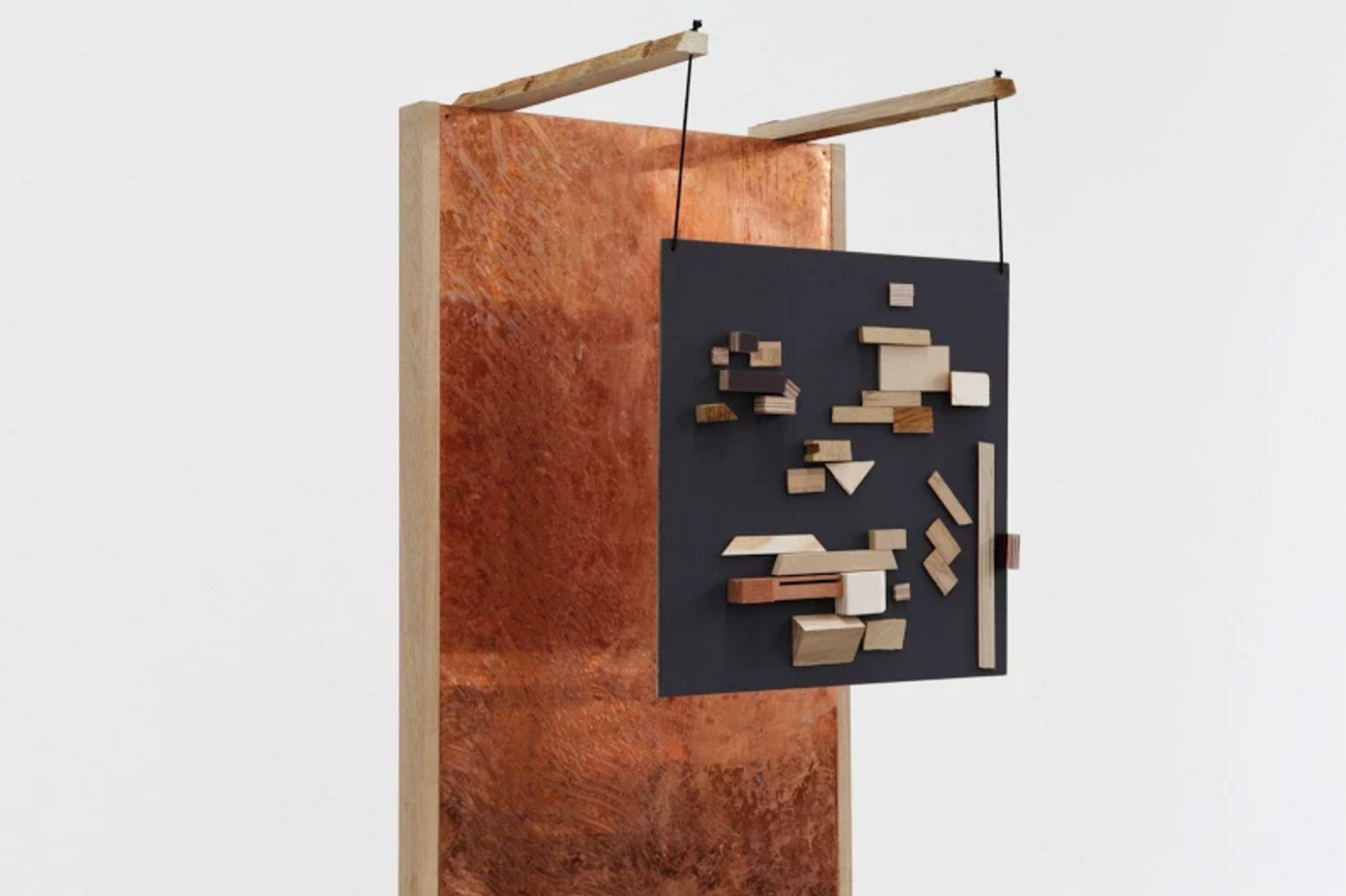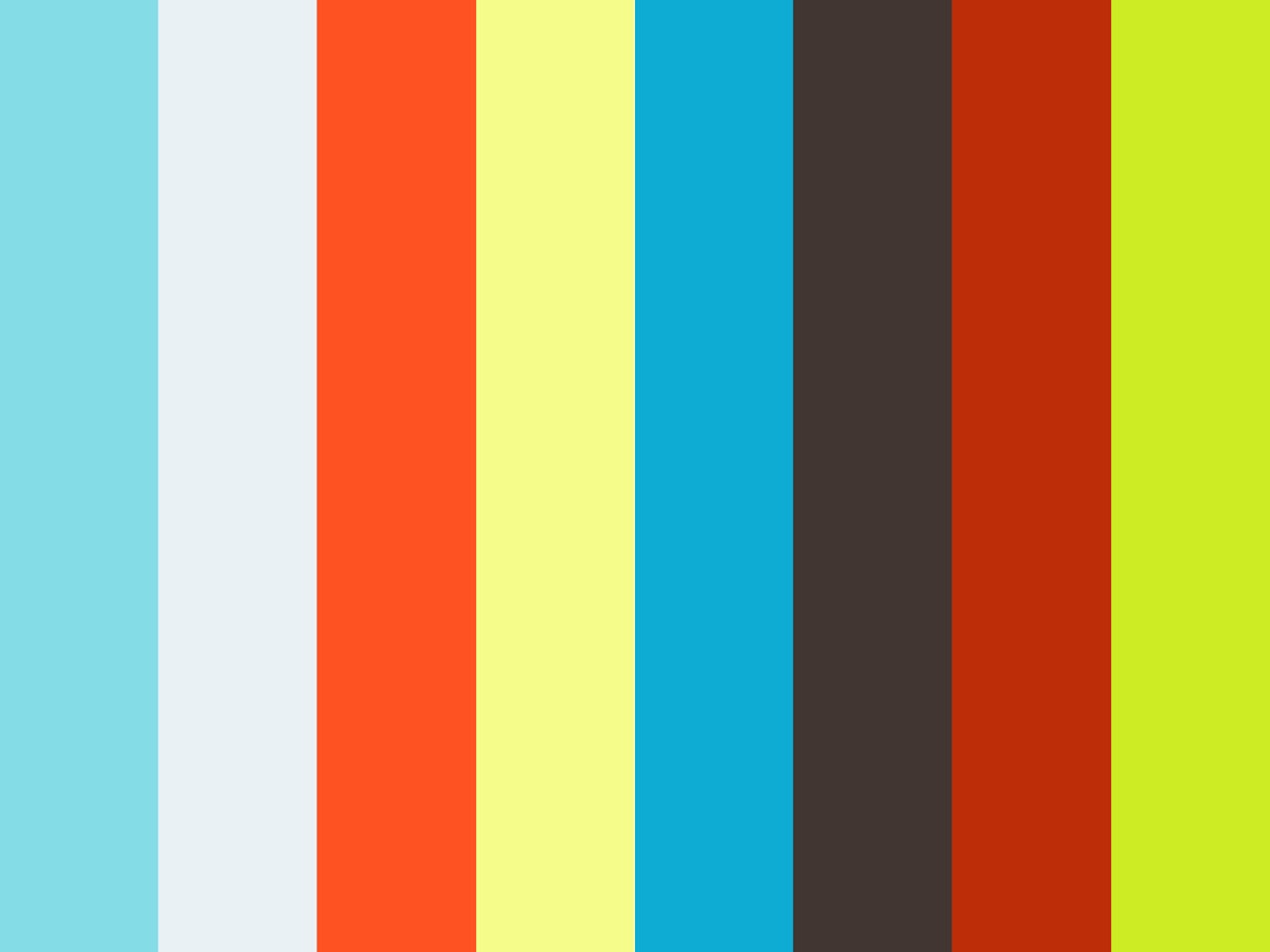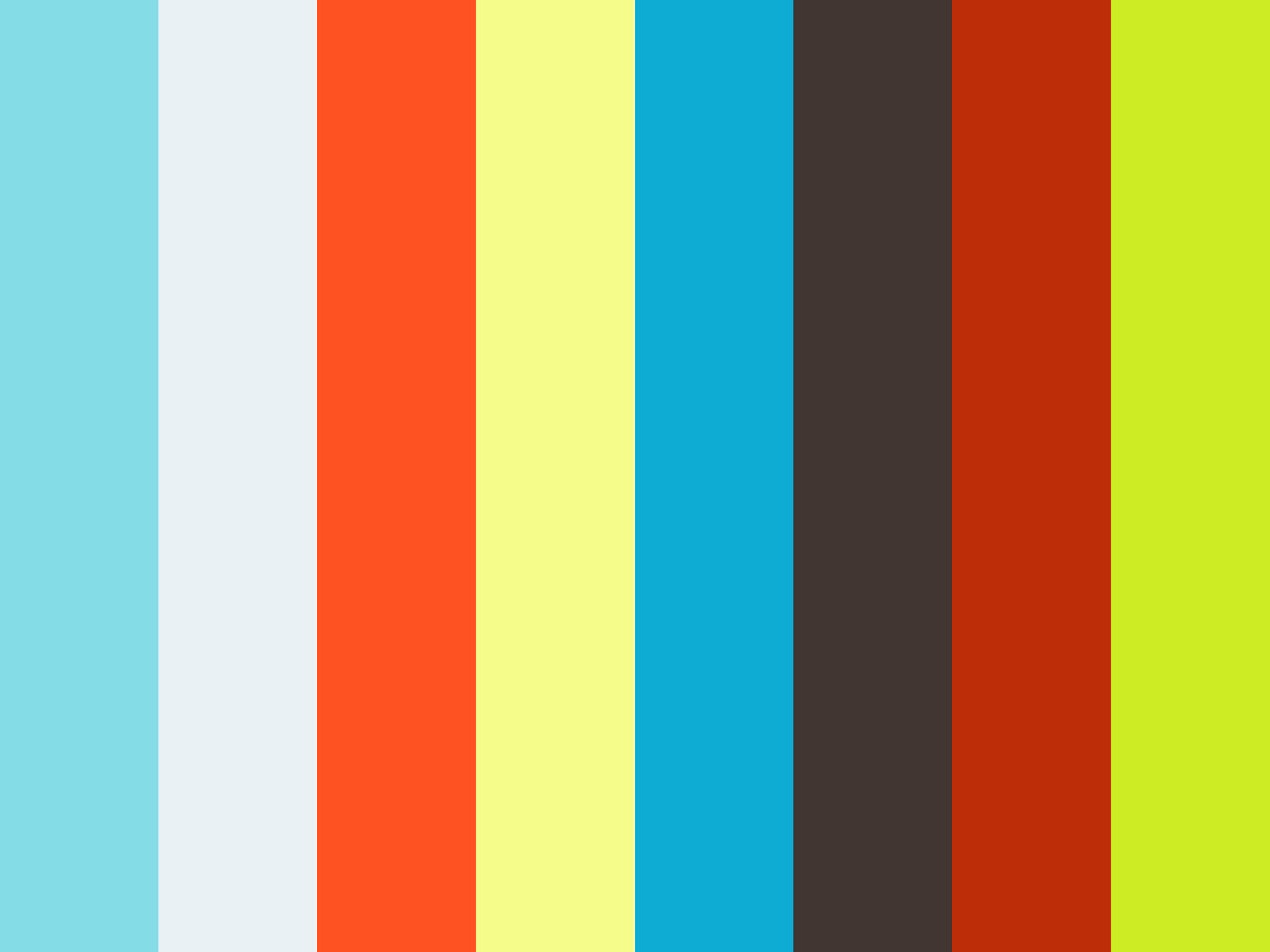Gallery Talks: The Ghanaian artist
in conversation with Azu Nwagbogu
and Maria Pia Bernardoni of the
African Artists' Foundation
Zohra Opoku’s work negotiates the textile cultures and visual codes that both define and camouflage identity. Driven by her Ghanaian / German heritage and using multiple mediums including installation, performance, sculpture, video and photography, her quietly powerful practice reimagines materials and traditions to address the socio-political influence fashion wields on African history and culture.
Opoku attained her MA in Fashion from Hamburg University of Applied Sciences and worked with Danish designer Henrick Vibskov before fully focussing on art. She’s held residencies at Art OMI Ghent, Jan Van Eyck Institute Maastricht and Iwalewa Haus Bayreuth and received the Kala Art Institute Fellowship award in 2015. Recent group shows include Vitra Design Museum’s Making Africa, LagosPhoto 2015 and Material Effects at Eli and Edythe Broad Art Museum at Michigan State University. 2016 holds solo shows at new Accra gallery 1957 and Kruger Gallery Chicago, a residency at Instituto Sacatar Bahia and numerous art fairs with Mariane Ibrahim Gallery Seattle.
Here this self-effacing talent reveals how she cuts her cloth…
Opoku attained her MA in Fashion from Hamburg University of Applied Sciences and worked with Danish designer Henrick Vibskov before fully focussing on art. She’s held residencies at Art OMI Ghent, Jan Van Eyck Institute Maastricht and Iwalewa Haus Bayreuth and received the Kala Art Institute Fellowship award in 2015. Recent group shows include Vitra Design Museum’s Making Africa, LagosPhoto 2015 and Material Effects at Eli and Edythe Broad Art Museum at Michigan State University. 2016 holds solo shows at new Accra gallery 1957 and Kruger Gallery Chicago, a residency at Instituto Sacatar Bahia and numerous art fairs with Mariane Ibrahim Gallery Seattle.
Here this self-effacing talent reveals how she cuts her cloth…
On working in fashion
I had lots of beautiful experiences in the fashion business and it’s one reason why I gained an interest in making collages. With the collage there are no rules - you can just let it flow and it’s more physical than using a pencil: you can mix, cut and bring in fabric elements too. I was always intrigued by the use of so many diverse forms of media during my time in fashion, but at some point it became overwhelming and I could not grow as an artist, so I decided to stop. The design aspect is still present in my work though, as well as the passion for developing aesthetic ideas of how things should look.
On performance
In Ghana, I usually have a performer for the opening of a show, but I do not indulge in performance myself. My reserved nature means I prefer to be in the background during a performance but when I posture myself in close proximity, the impact of that vibrant energy is a spirited experience. Ghana is a conservative country in terms of certain perceptions of how art is supposed to be and non-art audiences don’t see performance on the street as art, so that is where the intervention comes in.
In Ghana, I usually have a performer for the opening of a show, but I do not indulge in performance myself. My reserved nature means I prefer to be in the background during a performance but when I posture myself in close proximity, the impact of that vibrant energy is a spirited experience. Ghana is a conservative country in terms of certain perceptions of how art is supposed to be and non-art audiences don’t see performance on the street as art, so that is where the intervention comes in.
On identity
There's always a little bit of contradiction. I have a permanent search for belonging, through my passion for speaking the truth, speaking my reality and staying authentic, which comes from deep within me. In the end I bring different influences together, it's a process. Most of the time I feel it is my advantage to be enrooted and to keep the drive of moving and learning about my identity and expressing it in my work.
There's always a little bit of contradiction. I have a permanent search for belonging, through my passion for speaking the truth, speaking my reality and staying authentic, which comes from deep within me. In the end I bring different influences together, it's a process. Most of the time I feel it is my advantage to be enrooted and to keep the drive of moving and learning about my identity and expressing it in my work.
On her Handwash Only series
The project started in 2008 in Dakar, where I had a spot on a roof and could peek down at compounds, backyards and people. I decided to zoom in on clotheslines with my camera. I was fascinated by the way things were forming and changing constantly, the position of clothes and their outlines. I didn’t consider what I saw in terms of clothes, patterns or colours. For me it was more about how the wind created different shapes. When I moved to Ghana, I continued this research. I had conversations with people about their clothes and traditions. These interactions gave me an inside view of their lives and cultures, a culture which I didn’t have the chance to grow up in. As such, I can explore and discover everything myself now. But during the process of developing my sculptural draping, I was simply observing the “installations”, which then turned into something else.
On her Sidespecific installations
During my first artist residency in New York in 2012 I loved the interactions with other artists. I was curious about their wardrobes and how they related to their backgrounds, because they came from different parts of the world. This became the driving force to commence the Sidespecific installations. It was an intimate experience; looking at people's wardrobes and listening to narratives, which became awake through the pieces we used for the hanging. I didn't think about what I saw on the street anymore, and wanted to go further. I wanted to make it much bigger and extend the scale of the work. My studio was at the end of a barn facing a forest where I hung a line up. Now I want to repeat the process in Ghana in a typical forest like the ones in Volta region. I would also love to involve water by floating the installations.
During my first artist residency in New York in 2012 I loved the interactions with other artists. I was curious about their wardrobes and how they related to their backgrounds, because they came from different parts of the world. This became the driving force to commence the Sidespecific installations. It was an intimate experience; looking at people's wardrobes and listening to narratives, which became awake through the pieces we used for the hanging. I didn't think about what I saw on the street anymore, and wanted to go further. I wanted to make it much bigger and extend the scale of the work. My studio was at the end of a barn facing a forest where I hung a line up. Now I want to repeat the process in Ghana in a typical forest like the ones in Volta region. I would also love to involve water by floating the installations.
On The Billboardproject
The Billboardproject comprises five installations of huge patchworks of second-hand clothes on billboards in Accra. You see a lot of imported second hand clothes here because the majority of Ghanaians are not in the position to buy new clothes. They go to the market and buy the ”Obruni Dead”. What covers your body in West Africa is important because clothes speak to your civil status, identity, family background and personal style. So as Ghana embraces second-hand foreign clothing as the norm, I confront the cultural ramifications on self-perception, self worth and on collective meaning. What happens to the messages that have always been passed down through traditional fabric? How can we reverse the rapid decline in the local textile industry?
On her Textures series
In this portrait series I describe the identity of an artist by subverting the wardrobe of the subject. At first I operated in front of a black backdrop. I arranged their favourite clothes around their body, abstracting and concealing them and creating formations where patterns, textures and layers melt together. The series has become quite organic, even more so when I do the shooting outside. It’s more natural and still at the experimental stage. The Textures In Motion video was shot on a perfect day working with a poet artist who was very free in movement. I didn’t give instructions, it was a collaboration in that moment. Textures is something I'm still developing and will continue in the next couple of years. I’m researching costumes and masquerades and experimenting with self-portraits and the shades of leaves. I'm looking forward to where it gets to and what it develops into.
Interview conducted by Azu Nwagbogu and Maria Pia Bernardoni of the African Artists’ Foundation and Art Base Africa
In this portrait series I describe the identity of an artist by subverting the wardrobe of the subject. At first I operated in front of a black backdrop. I arranged their favourite clothes around their body, abstracting and concealing them and creating formations where patterns, textures and layers melt together. The series has become quite organic, even more so when I do the shooting outside. It’s more natural and still at the experimental stage. The Textures In Motion video was shot on a perfect day working with a poet artist who was very free in movement. I didn’t give instructions, it was a collaboration in that moment. Textures is something I'm still developing and will continue in the next couple of years. I’m researching costumes and masquerades and experimenting with self-portraits and the shades of leaves. I'm looking forward to where it gets to and what it develops into.
Interview conducted by Azu Nwagbogu and Maria Pia Bernardoni of the African Artists’ Foundation and Art Base Africa
Visit Zohra Opoku
Visit Art Base Africa


